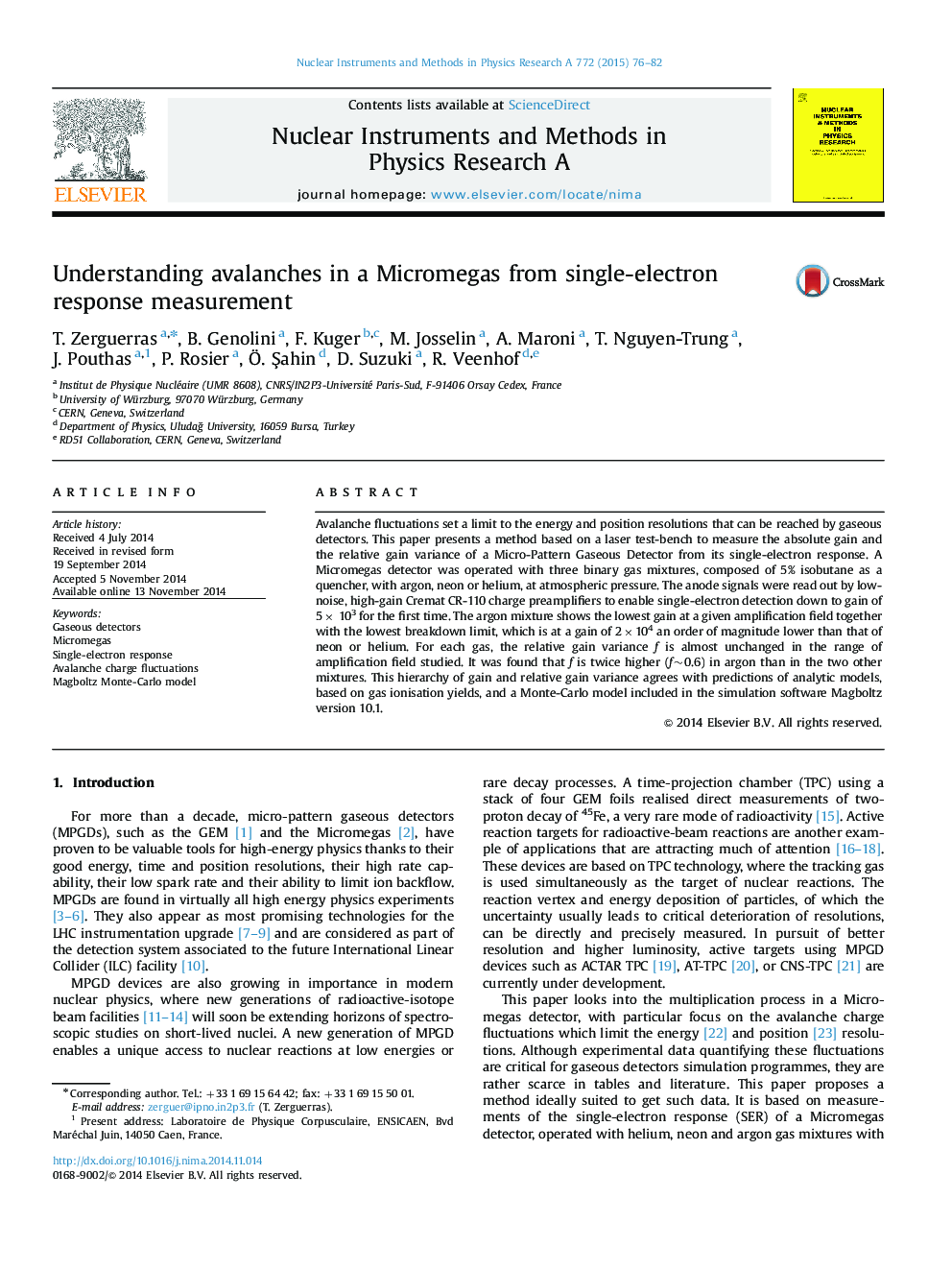| Article ID | Journal | Published Year | Pages | File Type |
|---|---|---|---|---|
| 8174445 | Nuclear Instruments and Methods in Physics Research Section A: Accelerators, Spectrometers, Detectors and Associated Equipment | 2015 | 7 Pages |
Abstract
Avalanche fluctuations set a limit to the energy and position resolutions that can be reached by gaseous detectors. This paper presents a method based on a laser test-bench to measure the absolute gain and the relative gain variance of a Micro-Pattern Gaseous Detector from its single-electron response. A Micromegas detector was operated with three binary gas mixtures, composed of 5% isobutane as a quencher, with argon, neon or helium, at atmospheric pressure. The anode signals were read out by low-noise, high-gain Cremat CR-110 charge preamplifiers to enable single-electron detection down to gain of 5Ã 103 for the first time. The argon mixture shows the lowest gain at a given amplification field together with the lowest breakdown limit, which is at a gain of 2Ã104 an order of magnitude lower than that of neon or helium. For each gas, the relative gain variance f is almost unchanged in the range of amplification field studied. It was found that f is twice higher (f~0.6) in argon than in the two other mixtures. This hierarchy of gain and relative gain variance agrees with predictions of analytic models, based on gas ionisation yields, and a Monte-Carlo model included in the simulation software Magboltz version 10.1.
Keywords
Related Topics
Physical Sciences and Engineering
Physics and Astronomy
Instrumentation
Authors
T. Zerguerras, B. Genolini, F. Kuger, M. Josselin, A. Maroni, T. Nguyen-Trung, J. Pouthas, P. Rosier, Ã. Åahin, D. Suzuki, R. Veenhof,
